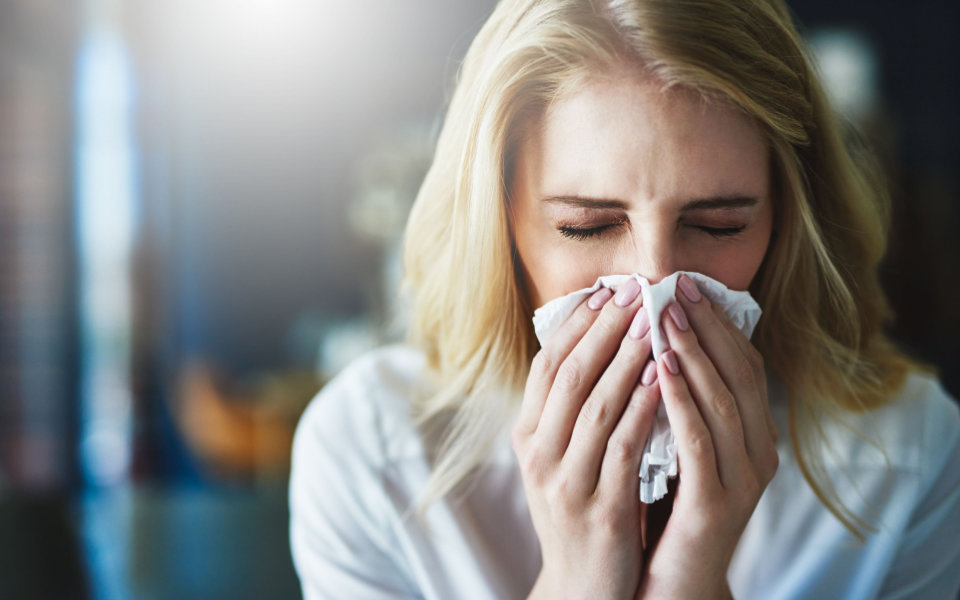
SUBSCRIBE TO OUR NEWSLETTER
Subscribe to our newsletter to stay informed about articles, events, and updates from Wellness Impact.

Subscribe to our newsletter to stay informed about articles, events, and updates from Wellness Impact.

Common cold and the flu, almost everyone has experienced these mild diseases. At best it will only cause some mild discomfort, at worst it could lead to more serious conditions such as pneumonia. Despite being so common, a lot of people still have some misconceptions regarding the common cold and flu.
Straightaway, the answer is no. The main difference between cold and flu is that the two diseases are caused by different viruses. There are about 200 types of viruses that can cause common colds; most of them are rhinoviruses while the flu is solely caused by the influenza virus.
It is understandable why people mix them up. Despite being caused by different viruses there are several things that make people confuse one from the other. Cold and Flu are both upper respiratory diseases, they may present with the same symptoms at times, and they are transmitted from one person to the other through microscopic droplets. These microscopic droplets are generated when a person sneezes or coughs. The droplets may float in the air for a while and would infect those who would inhale them. The droplets may also contaminate surfaces. When a person touches a surface contaminated with the droplets of those infected with the common cold or the flu, and would subsequently touch their face, they may get themselves infected as well.

Common cold and flu symptoms are at times indistinguishable. Runny and stuffy nose, coughs, sore throat, headaches, body aches, and fever are the usual symptoms of the common cold. However, the flu can sometimes present with the same symptoms at first, making distinguishing the two diseases difficult. A general rule of thumb in distinguishing between cold and flu is the severity of the symptoms. Oftentimes, you get the worst symptoms with flu. On top of this, the flu has additional symptoms like digestive distress, shivering and chills, nausea, and vomiting which may or may not appear.
As we get older, we get exposed to various pathogens, which means our immune system becomes better over time. This is especially true for viral diseases. In most cases, you don’t get infected with the same virus twice because your immune system is already prepared for it the next time it encounters said virus. However, children whose immune systems aren’t well developed yet are prone to acquiring cold and flu. Those who have weakened immune systems as a result of certain medical conditions are also prone to acquiring cold and flu.
In areas with four seasons, the so-called ‘Flu season’ begins as early as autumn. The number of flu cases will rise up exponentially reaching its peak in the middle of winter. As we approach summer, the number of cases would also drop dramatically which marks the end of the ‘flu season’. Colds also follow the same seasonality pattern as the flu. This is why the ‘cold season’ is interchangeable with the ‘flu season’. They are quite synonymous that people would, at times, refer to the ‘cold season’ or ‘flu season’ as ‘the cold and flu season’.
Most people believe that the common cold and the flu are caused by cold temperatures. However, the truth is that cold temperatures are not the cause of the two diseases. Rather, the cold temperature brings about conditions that encourage the transmission of the colds and the flu. As mentioned, the causative agent of both cold and flu are viruses. Currently, the well-accepted theories as to why cold and flu are prevalent around wintertime are as follows:
A year after the 1918 flu pandemic, a research paper regarding the flu virus was published. In the paper, the researchers tried to find out if there are lab animals that they could use for their experiments. The researchers found that guinea pigs would exhibit flu symptoms when they are deliberately infected with the influenza virus and that the infected guinea pigs could transmit the virus to other guinea pigs. In 2007, Dr. Peter Palese used this research as the basis for his experiments. He started an investigation on the effect of ambient temperature and humidity on the transmission rate of the influenza virus with guinea pigs as the test subjects; an investigation that was once only possible by having humans as test subjects. Obviously, no one did this study on humans for ethical reasons.
Dr. Palese’s experiment was quite simple, he placed infected guinea pigs in one cage and healthy ones in another. The cages were placed close to each other but not too close as to avoid physical contact between the healthy and infected guinea pigs. Dr. Palese made various set-ups varying the temperature and humidity for each set-up. At the end of his investigations, Dr. Palese noted that there were more influenza transmissions in the set-up where the temperature and humidity were low. Thus, Dr. Palese concluded in his research paper that the influenza virus transmission is enhanced in cold and dry conditions. Despite the monumental find, Dr. Palese’s paper did not explain the reason as to why this is so. The best explanation for Dr. Palese’s finding can be found in a research paper that was published around the 60s. In this paper, the researchers were able to determine that the influenza virus could survive longer in colder and drier conditions.

To protect ourselves from the common cold and flu, we must understand how these diseases are transmitted. As mentioned earlier, the cold and flu are upper respiratory diseases that are released from the infected individual onto the environment via the droplets that are generated when they sneeze or cough. Infection occurs when a healthy individual inhales these droplets or when they would touch a surface contaminated with these droplets and then touch their eyes, nose, or mouth soon after. Knowing that, how do we prevent the common cold and flu? Simple, we just have to make sure that we don’t inhale the droplets, or unknowingly bring the droplets to our eyes, nose, and mouth. To do this, just observe the following precautions:
As a courtesy to others, you should be responsible enough not to spread the virus. If possible don’t go to public areas, stay in your home. Wash your hands frequently and try not to touch any surface with unclean hands. If you have to cough or sneeze, do it in an open area where the droplets can be dispersed easily or where the droplets can be sterilized by the ultraviolet rays of the sun. Another thing you should do when you cough or sneeze is to cover your mouth with a tissue paper. If you can’t get some tissue paper, sneeze or cough into the crook of your elbow. Also, have some separate tablewares at home. When you’re free of the virus, sterilize these tablewares before putting it back for everyone to use.

There are a lot of pharmaceutical drugs that can help alleviate the symptoms of cold and flu. When your nose gets too stuffy, you can take in decongestants. When you can’t handle the body aches and the high temperature, you can take in paracetamol and ibuprofen. Although these medications can be effective, the main drawback is their side effects. Fortunately, there are various natural treatments and remedies for cold and flu.
Cold and Flu are viral diseases that are self-limiting. Your body has built-in processes that help you deal with these kinds of assaults. However, the body cannot carry out these processes properly when it has to worry about other things. So that your body can focus on fighting the infection, take the day off and rest properly. It may sound counterproductive but it’s actually quite the opposite. Forcing yourself to work or do tasks when you have a cold or flu would lead to poor performance. What’s more, is that your recovery would be slowed down. Worst of all, your condition might worsen and you may be forced to take several days off. Which do you think is better, to be absent for a day or work sick for a couple of days with poor performance with the added risk of worsening your condition which could cause you to miss work even more? we could all agree that we’d rather miss one workday. So when you feel like your body needs some rest to ward off that cold or flu, do it.
Since you’re taking a day off, try to get enough sleep. Having the flu or cold may make sleeping difficult but there are ways to address this problem. For starters, you could take a hot shower before going to bed to soothe your congested sinuses and get relief from headaches. Adding extra pillows under your head could also help with congestion which could help you sleep better.
Surprisingly, staying hydrated is enough to decrease sickness duration and symptom severity of both flu and cold. As mentioned earlier, your body has some natural processes that are designed for fighting off infections. If your body doesn’t have to worry about conserving water, then it can focus on fighting off the viral infection. Aside from this, water is thought to be an effective detoxifier. When your body is free of toxins then the immune system can fight off infections better.
Any natural edibles that provide vitamin C to our body are great for treating cold and flu. Although there’s no evidence that vitamin C cures cold or flu, they’ve been shown to lessen the severity of symptoms and the duration of sickness.
We suggest that you try the tried and tested lemon-honey-mint tea for cold and flu. The lemon contains a lot of vitamin C, honey is great for soothing sore throat and treating cough, and the mint provides relief from blocked sinuses or congested noses. This amazing cold and flu tea is quite easy to prepare. All you need is two cups of water, which is usually the maximum volume of a standard tea-cup, a handful or half a cup of fresh mint leaves, half a lemon, and some honey.
Instructions:
Although it is not well understood why, zinc is a mineral that is thought to be effective at reducing the duration and severity of colds and flu. The well-accepted explanation as to why this is so has to do with the mineral’s immune-boosting effect. Beyond that, there is growing evidence that zinc may interfere with the replication of rhinoviruses, the usual viral-agent of common colds.
Zinc-rich foods include beans, nuts, and seafood. One thing that pairs well with seafood is cayenne peppers. Cayenne peppers contain capsaicin which is responsible for this peppers’ spiciness and its ability to break up mucus effectively relieving congestion, sore throat, and cough. Thus, we also recommend the Spicy Seafood Stew for dealing with cold and flu.
Ingredients
Instructions
It turns out, probiotics aren’t only good for your tummy but they are also good for your immune system as well. Probiotics are live bacterial cultures that when ingested would, later on, take residence in your gut. Once it is there in your gut, it forms a kind of mutualistic symbiotic relationship with you, the host. In exchange for providing the probiotic bacteria a home and some food, the bacteria would help you digest certain food items and there is growing evidence that they help make your immune system function better. Foods like tempeh, miso, sauerkraut, and yoghurt are probiotic foods.

Aside from telling the difference between cold and flu, knowing when a simple cold or flu has gotten out of hand is also essential.
For colds, you should seek medical attention when:
Symptoms of the flu can be quite severe at times. If you are pregnant or are over 65, it is highly advised that you seek medical attention. Besides that, when you have the flu you should see a doctor when:
Certain groups are prone to developing complications when they have the flu. These are the groups that are prone to developing flu complications and should be brought to a physician whenever they have the flu:
Children are especially delicate because their immune systems aren’t fully developed yet. Even if you think that the cold or flu isn’t causing the symptoms that are about to be mentioned, call emergency services right away for these are serious symptoms:
Pneumonia is a complication that can occur in both cold and flu. It is essential to know when a cold or flu has progressed to pneumonia. These are the symptoms that you should watch out for:
It is actually quite hard to tell whether your Cold or Flu is COVID-19 or not. The most common symptom of COVID-19 includes fever with or without chills, cough, shortness of breath or difficulty breathing, fatigue, muscle or body aches, headache, sore throat, congestion or runny nose, nausea or vomiting, diarrhea, and new loss of taste or smell. Except for the last symptom, all of these symptoms are present in both cold and flu. To address this problem, health authorities have certain rules in place to try and catch every case of COVID-19. Rules may vary from country to country but in general, those who have flu-like symptoms are advised to practice self-quarantine and get tested for COVID-19.
If you are unsure whether your cold or flu is COVID-19 or not but are presenting with the following symptoms:
Please seek emergency medical care immediately as these are serious symptoms that are potentially life-threatening and could possibly be COVID-19.
There is a difference between cold and flu. Although the two are upper respiratory viral infections that are spread through droplets, their causative agents are vastly different. Most colds are caused by Rhinoviruses while the flu is solely caused by the Influenza virus. Another thing that differentiates the two is how the symptoms present themselves. The flu has a more sudden onset and usually, its symptoms are more severe. The two diseases may at times be indistinguishable as all of the symptoms of the common colds are present in the flu. Aside from that, the two diseases are prevalent around wintertime.
Fortunately, there are several natural ways of treating cold and flu. Aside from that these diseases are self-limiting, so your only concern is managing the symptoms. Despite this, you should still be vigilant of the symptoms that you are presenting as it could worsen and progress to pneumonia.